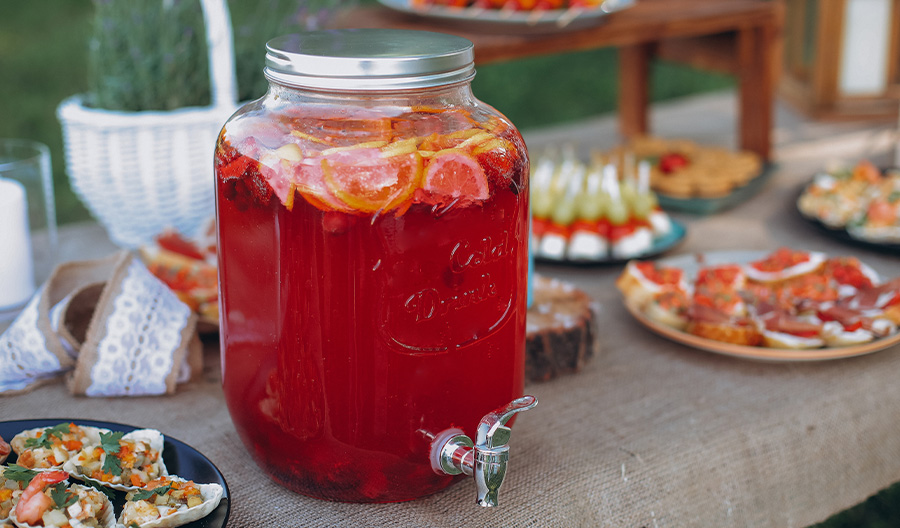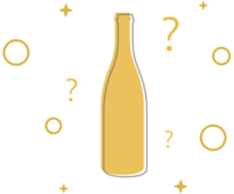Batching cocktails, i.e. pre-mixing them in large quantities, has long been used as a secret weapon by professional bartenders. They are impressive, can serve a crowd, and are surprisingly easy to prepare—especially once you have a few favorite recipes.
It’s worth learning to make batched cocktails, because once the prep is completed, you can easily pour a consistent drink. Batching allows bartenders to keep up with the demands of guests and every drink in the batch will taste pretty much the same.
Even if you’re not mixing drinks for hundreds of thirsty guests, you can still reap the benefits of batching cocktails.
What Cocktails Can You Batch?
Before you begin, you’ll need to decide on an appropriate cocktail recipe to batch, keeping in mind that not all cocktails should be prepared and bottled in large volumes.
Spirit-forward, stirred, classic cocktails lend themselves to batching as they are more shelf-stable in comparison to anything with juice, citrus or syrups. Think drinks like the Negroni, Manhattan, martini and old fashioned.
On the other hand, shaken cocktails, like daiquiris and margaritas, don’t always work as well in large batches. This often has to do with the large amount of citrus in many shaken cocktails.
One of the most important aspects of shaken drinks that include citrus is the aeration that occurs and the way it softens the bite of the lemon or lime.
That said, if you have your heart set on batching a shaken cocktail, it can still work—if you get the timing right. Some ingredients, such as juices, will oxidize, so you should avoid preparing it too far in advance. You will still need to shake the drink, as shaking also incorporates aeration and texture to a cocktail.
For best results, keep your cocktail shaker handy when you’re ready to serve. For each cocktail, combine the prepped ingredients and shake vigorously over ice before serving.
It’s also important to note that punches and pitcher drinks, like blended piña coladas, are typically made right before serving or kept in a moving vessel that keeps the ingredients mixed. These likely won’t batch well.

What Do You Need to Batch Cocktails?
Besides your drink ingredients, batching cocktails requires minimal supplies. You will need:
Sterilized bottle, Mason jar or jug for storing and chilling, like these
Liquid-measuring cup
Funnel for pouring ingredients into the bottle
Labels
Cutting board, knife and citrus juicer (as needed)
Scale to measure the amount of dilution required—more on that soon
How to Convert a Single Cocktail Recipe to a Batch
Batching a cocktail recipe usually comes down to simple math—multiplying ingredient quantities by the number of servings you want to make. Be sure to use liquid measuring cups, and remember: two tablespoons are equal to one fluid ounce, and there are eight fluid ounces in a cup. If you get stuck on the math, Google is your friend.
Let’s say you’re batching a martini that you want to predilute and keep in your freezer so that you can pour yourself a delicious, frosty martini when you get home from work. You would take your single cocktail specs: two ounces gin, one-ounce dry vermouth, two dashes orange bitters and one-ounce water [for predilution], and you multiply those ingredients to equal the size of the batch you want to make.
If you wanted to make a batch for 10 martinis, you would measure 20 ounces (2.5 cups) of gin, 10 ounces (1.25 cups) of dry vermouth, 20 dashes of bitters and 10 ounces (1.25 cups) of water. Combine those ingredients, stir and then bottle and put them in the freezer.
Note that a small, but crucial, step in batching many spirit-forward cocktail recipes is the addition of water. The exact amount of dilution required in batching a drink will vary depending on the cocktail, how it is served (up or over ice) and personal preference. Calculating the required water by preparing a single cocktail and weighing your drink before and after stirring is recommended. The difference in weight is the amount of water you will need to add to your batched cocktail.
The key is incorporating the water that would normally be added when stirring [or shaking] the cocktail. The addition of water to a cocktail is an important component as it lowers the ABV, opens up the aromatics and helps balance the drink.
If you’re planning to serve your cocktail on the rocks or shake with ice as you serve, you may be able to skip this step. Just be sure to wait until it’s time to serve to add your ice so the cocktail doesn’t get too diluted.
How Long Do Batched Cocktails Last?
This can vary based on the ingredients used in the cocktail, Roennfeldt says. Generally, cocktails with citrus or juice should be consumed the same day and stored in the fridge before serving. Spirit-forward cocktails with vermouth, like a Manhattan or Negroni, can last up to a month stored in the fridge or freezer in an airtight container. Other spirit-forward cocktails, like an old fashioned, can last indefinitely when properly stored in the fridge or freezer.
If you do want to batch a cocktail that includes additional ingredients, like citrus or fruit juices, it can still work for long-term storage as long as you’re storing them separately. If you’re batching, say, a margarita, you would want to batch together the non-perishable tequila, orange liqueur and any sweetener. That batch will last a very long time since it doesn’t have hardly anything perishable in it. When you’re ready to serve, you’ll just need to add the fresh-squeezed lime juice, ice and a quick shake.
Master these tips and tricks and your pre-batching efforts will really start to pay off. Pouring a professional-style cocktail will be as simple as popping a bottle.

